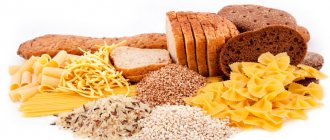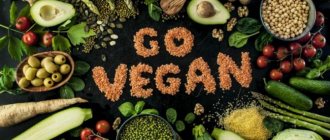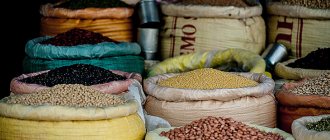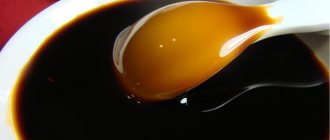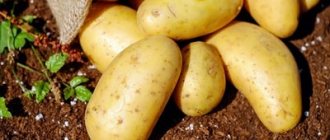Soy is one of the few plant sources of protein that contains the entire necessary set of amino acids and vitamins. The product has become a real salvation for vegetarians who need to replace animal protein with a plant-based analogue.
The so-called plant protein saturates the body for a long time and increases human functionality significantly. The only drawback of soybeans (and all legumes) is the need for long-term heat treatment. In the best case, you will have to cook it for 90 minutes and periodically add water to the pan with soybeans, in the worst case, you will have to soak it for a day in water at a certain temperature.
General characteristics of the product
Content:
- General characteristics of the product
- Beneficial features
- Chemical composition
- Use of the ingredient in cooking
- How to choose soybeans
- How to store soybeans
- Contraindications for use
- Soybean genetics
Cultivated soybeans are characterized by heterogeneous stem texture. It can be thin or thick, lowered under the pressure of the leaves or completely bare. The length of an adult plant varies from 15 cm to 2 m. The leaves are downward, the venation is pinnate, the shape is formed from 3–9 sectors. The plant produces a neat flower that is colored in a unique shade of purple.
The fruit looks traditional for a legume plant: it opens with two valves along the dorsal and ventral sutures, and contains a small number of seeds (no more than 3). The beans take on an oval shape, are resistant to cracking, and are about 4–6 cm long. The seeds are enclosed in a special valve - the pericarp, consisting of three layers. It protects the inside from the aggressive external environment and eliminates the possibility of cracking. The pericarp is quite plastic and has the ability to shrink and unclench when necessary.
The seed coat of the beans is smooth and shiny, resistant to liquids. Below it are a root and a bud. These are the main and largest organs of the soybean embryo. The beans are colored in one of the shades of yellow, orange, black, green or brown.
Are soy isoflavones to blame?
Isoflavones belong to a functional class of nonsteroidal phytochemicals called phytoestrogens (which also include lignans and coumestans), which have a chemical structure and function similar to endogenous animal estrogens (2, 3). The main isoflavones found in soybeans are genistein, daidzein and glycitein. The isoflavone content of soy products varies between brands and products.
For example, in Canada, isoflavones in soybeans range from 360 to 2241 mg per kg. The isoflavone content of soybeans from Romania ranged from 210 to 1340 mg/kg, 1176–3309 mg/kg in the USA, and 525–986 mg/kg in India. Temperature and soil moisture are critical for the differential synthesis of soybean isoflavones during plant growth, with the highest concentrations of isoflavones occurring at low temperatures and high soil moisture, depending primarily on the former.
Beneficial features
Soybeans are known primarily for their record protein content and vital amino acids.
Soy is shown [1]:
- patients with gastrointestinal diseases (ulcers/gastritis);
- people with cardiovascular pathologies;
- diabetics;
- patients with diseases of the musculoskeletal system.
Soy stimulates the development of beneficial intestinal bacteria, saves people from dysbiosis and is a kind of prevention of problems with the gastrointestinal tract (GIT). This product is also necessary for women during menopause [2]. It compensates for low estrogen production and stabilizes both physical and psycho-emotional health.
What are the benefits of soy sauce?
Fans of Asian cuisine have long been familiar with soy sauce, which is used to prepare a huge number of dishes. Preparing natural soy sauce takes about a year. It is made from evaporated soybeans and roasted wheat grains, which then undergo an enzymatic fermentation process in special containers. After a year, the sauce is filtered and bottled.
Benefits of soy sauce:
- Improved blood circulation;
- Fight free radicals with antioxidants;
- Prevention of cardiovascular diseases;
- Increased content of amino acids;
- Minimum calorie content, no cholesterol.
Unfortunately, the desire to make a profit leads soy sauce manufacturers to adulterate their product. To speed up the fermentation process, pathogenic bacterial cultures are added to the sauce, which allows you to get something like a sauce in a month instead of a year. An even more harmful method is boiling soybeans in hydrochloric acid and quenching this solution with alkali or diluting soy concentrate with plain water.
Using adulterated sauce is dangerous due to the carcinogens it contains. Both regular sauce and sauce prepared using cheaper technology contain an excessive amount of salt, which leads to salt deposits.
Chemical composition
Nutritional value (per 100 grams of raw product) [3]
| Calorie content | 364 kcal |
| Squirrels | 36.7 g |
| Fats | 18 g |
| Carbohydrates | 17.3 g |
| Alimentary fiber | 13.5 g |
| Water | 12 g |
Vitamin composition (in milligrams per 100 grams of raw grain)
| Retinol (A) | 0,012 |
| Beta carotene | 0,07 |
| Thiamine (B1) | 0,94 |
| Riboflavin (B2) | 0,22 |
| Choline (B4) | 270 |
| Pantothenic acid (B5) | 1,75 |
| Pyridoxine (B6) | 0,85 |
| Folic acid (B9) | 0,2 |
| Tocopherol (E) | 1,9 |
| Biotin (N) | 0,06 |
| Nicotinic acid (PP) | 9,7 |
Nutrient balance (in milligrams per 100 grams of raw grain)
| Macroelements, mg | |
| Potassium (K) | 1607 |
| Calcium (Ca) | 348 |
| Magnesium (Mg) | 226 |
| Sodium (Na) | 6 |
| Sulfur (S) | 244 |
| Phosphorus (P) | 603 |
| Chlorine (Cl) | 64 |
| Microelements, mg | |
| Aluminum (Al) | 0,7 |
| Bor (V) | 0,75 |
| Silicon (Si) | 177 |
| Iron (Fe) | 9,7 |
| Iodine (I) | 0,0082 |
| Cobalt (Co) | 0,312 |
| Manganese (Mn) | 2,8 |
| Copper (Cu) | 0,5 |
| Molybdenum (Mo) | 0,099 |
| Nickel (Ni) | 0,304 |
| Strontium (Sr) | 0,067 |
| Fluorine (F) | 0,12 |
| Chromium (Cr) | 0,016 |
| Zinc (Zn) | 2,01 |
Conclusions on the effects of soy on men's health
1. There is currently no evidence of the negative impact of consuming soy products on men's health, and the information available about this comes from animal studies, which are not applicable to humans.
2. In individuals who regularly consume soy products, the typical intake of isoflavones, which are phytoestrogens, is low and often insufficient to even provide beneficial health effects, let alone the perceived risk of negative effects.
Source:
- Kumar P., Chatli MK, Mehta N., Singh P., Malav OP, Verma AK Meat analogues: Health promising sustainable meat substitutes. Crit. Rev. Food Sci. Nutr. 2017;57:923–932.
- Phytoestrogens: the biochemistry, physiology, and implications for human health of soy isoflavones. Setchell KD Am J Clin Nutr. 1998 Dec; 68(6 Suppl):1333S-1346S.
- Phytoestrogens. Cabot W. J Am Acad Orthop Surg. 2003 May-Jun; 11(3):153-6.
- Breinholt V., Larsen JC Detection of weak estrogenic flavonoids using a recombinant yeast strain and a modified MCF7 cell proliferation assay. Chem. Res. Toxicol. 1998;11:622–629. doi: 10.1021/tx970170y. [PubMed] [CrossRef]
- Kuiper GG, Lemmen JG, Carlsson B., Corton JC, Safe SH, van der Saag PT, van der Burg B., Gustafsson JA Interaction of estrogenic chemicals and phytoestrogens with estrogen receptor beta. Endocrinology. 1998;139:4252–4263. doi: 10.1210/endo.139.10.6216. [PubMed] [CrossRef]
- Adlercreutz H., Markkanen H., Watanabe S. Plasma concentrations of phyto-oestrogens in Japanese men. Lancet. 1993;342:1209–1210.
- Kapiotis S., Hermann M., Held I., Seelos C., Ehringer H., Gmeiner BM Genistein, the dietary-derived angiogenesis inhibitor, prevents LDL oxidation and protects endothelial cells from damage by atherogenic LDL. Arterioscler. Thromb. Vasc. Biol. 1997;17:2868–2874.
- Nilsson S., Gustafsson J.-A. Biological role of estrogen and estrogen receptors. Crit. Rev. Biochem. Mol. Biol. 2002;37:1–28.
- Meegan MJ, Lloyd DG Advances in the science of estrogen receptor modulation. Curr. Med. Chem. 2003;10:181–210.
- Riggs BL, Hartmann LC Selective estrogen-receptor modulators—Mechanisms of action and application to clinical practice. N.Engl. J. Med. 2003;348:618–629.
- Smith CL, O'Malley BW Coregulator function: A key to understanding tissue specificity of selective receptor modulators. Endocr. Rev. 2004;25:45–71.
- Liu XX, Li SH, Chen JZ, Sun K., Wang XJ, Wang XG, Hui RT Effect of soy isoflavones on blood pressure: A meta-analysis of randomized controlled trials. Nutr. Metab. Cardiovasc. Dis. 2012;22:463–470.
- Hooper L., Ryder JJ, Kurzer MS, Lampe JW, Messina MJ, Phipps WR, Cassidy A. Effects of soy protein and isoflavones on circulating hormone concentrations in pre- and post-menopausal women: A systematic review and meta-analysis. Hum. Reprod. Update. 2009;15:423–440.
- Matthews J., Gustafsson J.-A. Estrogen signaling: A subtle balance between ER alpha and ER beta. Mol. Interv. 2003;3:281–292.
- A model to estimate the estrogen receptor mediated effects from exposure to soy isoflavones in food. Safford B, Dickens A, Halleron N, Briggs D, Carthew P, Baker V. Regul Toxicol Pharmacol. 2003 Oct; 38(2):196-209.
- Safety of soy-based infant formulas containing isoflavones: the clinical evidence. Merritt RJ, Jenks BH. J Nutr. May 2004; 134(5):1220S-1224S
- Gu L., House SE, Prior RL, Fang N., Ronis MJJ, Clarkson TB, Wilson ME, Badger TM Metabolic phenotype of isoflavones differ among female rats, pigs, monkeys, and women. J. Nutr. 2006;136:1215–1221.
- Wisniewski AB, Klein SL, Lakshmanan Y., Gearhart JP Exposure to genistein during gestation and lactation demasculinizes the reproductive system in rats. J. Urol. 2003;169:1582–1586.
- Fielden MR, Samy SM, Chou KC, Zacharewski TR Effect of human dietary exposure levels of genistein during gestation and lactation on long-term reproductive development and sperm quality in mice. Food Chem. Toxicol. 2003;41:447–454.
- Ojeda SR, Andrews WW, Advis JP, White SS Recent advances in the endocrinology of puberty. Endocr. Rev. 1980;1:228–257.
- Robinson JD, Judd HL, Young PE, Jones OW, Yen SS Amniotic fluid androgens and estrogens in midgestation. J. Clin. Endocrinol. Metab. 1977;45:755–761.
- Setchell KDR, Brown NM, Zhao X., Lindley SL, Heubi JE, King EC, Messina MJ Soy isoflavone phase II metabolism differs between rodents and humans: Implications for the effect on breast cancer risk. Am. J. Clin. Nutr. 2011;94:1284–1294.
- Soukup ST, Helppi J., Müller DR, Zierau O., Watzl B., Vollmer G., Diel P., Bub A., Kulling SE Phase II metabolism of the soy isoflavones genistein and daidzein in humans, rats and mice: A cross-species and sex comparison. Arch. Toxicol. 2016;90:1335–1347.
- A specific breeding problem of sheep on subterranean clover pastures in Western Australia. Bennetts HW, Underwood EJ, Shier FL. Aust Vet J. 1946 Feb; 22(1):2-12
- Hypogonadism and erectile dysfunction associated with soy product consumption. Siepmann T, Roofeh J, Kiefer FW, Edelson DG. Nutrition. 2011 Jul-Aug; 27(7-8):859-62.
- An unusual case of gynecomastia associated with soy product consumption. Martinez J, Lewi JE. Endocr Pract. 2008 May-Jun; 14(4):415-8.
- Review Soybean isoflavone exposure does not have feminizing effects on men: a critical examination of the clinical evidence. Messina M. Fertil Steril. 2010 May 1; 93(7):2095-104.
- Song G., Kochman L., Andolina E., Herko RC, Brewer KJ, Lewis V. Beneficial effects of dietary intake of plant phytoestrogens on semen parameters and sperm DNA integrity in infertile men. Fertil. Steril. 2006;86:S49.
- Mitchell JH, Cawood E., Kinniburgh D., Provan A., Collins AR, Irvine DS Effect of a phytoestrogen food supplement on reproductive health in normal males. Clin. Sci. 2001;100:613–618.
- Hamilton-Reeves JM, Vazquez G., Duval SJ, Phipps WR, Kurzer MS, Messina MJ Clinical studies show no effects of soy protein or isoflavones on reproductive hormones in men: Results of a meta-analysis. Fertil. Steril. 2010;94:997–1007.
- National Toxicology Program Multigenerational reproductive study of genistein (Cas No. 446-72-0) in Sprague-Dawley rats (feed study) Natl. Toxicol. Program Tech. Rep. Ser. 2008;539:1–266
- Review Investigating the role of natural phyto-estrogens on bone health in postmenopausal women. Valtueña S, Cashman K, Robins SP, Cassidy A, Kardinaal A, Branca F. Br J Nutr. 2003 Jun; 89 Suppl 1():S87-9.
- Review Soy foods and supplementation: a review of commonly perceived health benefits and risks. D'Adamo CR, Sahin A. Altern Ther Health Med. 2014 Winter; 20 Suppl 1():39-51
- Does soy protein affectcirculating levels of unbound IGF-1? Messina M, Magee P. Eur J Nutr. 2021 Mar;57(2):423-432.
- Review Genistein genotoxicity: critical considerations of in vitro exposure dose. Klein CB, King AA. Toxicol Appl Pharmacol. 2007 Oct 1; 224(1):1-11.
- Review Soy, Soy Foods and Their Role in Vegetarian Diets. Rizzo G, Baroni L. Nutrients. 2021 Jan 5; 10(1):.
Use of the ingredient in cooking
Cooking soybeans is a very lengthy process. The beans are soaked for at least 15 hours, washed in cool water and boiled for about 3-4 hours until tender. Only fruits that have undergone many hours of preparation become edible (raw beans are difficult to even bite through).
Among the products containing soy are:
- tofu cheese;
- yogurt (yofu);
- chocolate;
- cereal protein bars;
- ice cream;
- milk.
All these products are low in calories and can be included in the diet.
After heat treatment, soybeans become soft, slightly crumble and filled with a sweetish, nutty flavor. Boiled beans can be eaten as a side dish, added to salads, served with meat and fish dishes, and even used as a dessert.
In cooking, soybean acts as a vegetable substitute for meat. The ingredient is used to create sauces, oils and drinks. The special extract secreted by soybeans makes the dish incredibly tasty. The combination of tart and sweet nutty notes adds a certain sophistication to the food.
You can also cook from soy:
- pate;
- homemade sausage;
- vegetable stew;
- appetizer with the addition of meat or fish ingredients.
Smooth Pho Soup Recipe Using Soy Sprouts
We will need the following ingredients:
- boiled beef – 250 g (can be replaced with chicken);
- ginger – 50 g;
- onions – 2 pcs.;
- sauce for fish dishes - to taste;
- cinnamon – 2 pcs.;
- star anise – 5 pcs.;
- black peppercorns - to taste;
- rice noodles – 150 g;
- soybean sprouts – 150 g;
- beef broth – 1 l;
- green onions – 4 stalks;
- herbs and spices - to taste.
Preparation
Cut the vegetables into small cubes and chop the selected greens. Pour fish sauce into the meat broth, add onion, ginger, cinnamon, star anise and your favorite spices. Constantly taste the dish to understand the specific taste. As soon as you find the ideal dosage, stop and move on to the next stage of cooking. Bring the spicy broth to a boil and leave to simmer for about 20-30 minutes - this will allow the broth to absorb the flavor of each spice.
Strain the finished broth, add rice noodles and return to medium heat for 5-7 minutes. Remove the finished noodles with a slotted spoon and place on a plate, adding soy sprouts and boiled beef. Pour the dish with meat broth, add a drop of lime or lemon and serve.
Soy for weight loss and sports nutrition
It has been proven that consuming soybean fruits promotes weight loss; in addition, the product contributes to the formation of sculpted muscles in athletes. Why does this happen? As mentioned earlier, soybeans are rich in vitamins E and B, nonessential and essential amino acids (protein), minerals (potassium, iron, calcium, phosphorus) and other beneficial substances. Thanks to this, soy products (soy milk, soy meat, tofu, soy sauce) are easily digestible. They contain a lot of vegetable protein and biologically active components.
© denio109 – stock.adobe.com
Nutrients contained in soybeans and sprouts reduce cholesterol levels and improve metabolic processes in the body. In combination with physical activity, these components help not only get rid of excess weight, but also not lose muscle mass. There are a huge number of soy diets that can help you lose weight, tighten muscles, get rid of cellulite and eliminate swelling. Dietary soy nutrition is the path to a healthy and beautiful body.
What is the essence of the soy diet?
The soy diet does not mean you have to eat only soy. The main principle is to use analogues of conventional products. For example, regular cow's milk is replaced with soy milk, wheat flour with soy flour, beef, chicken, pork with soy meat. Regarding the latter, this is only optional, because some types of meat are also low-calorie when cooked correctly.
There are many different soy diets, but in any version you should adhere to the following principles:
- Eat often, but in small portions (200 g per meal). There should be 4-5 meals.
- You need to drink at least 1.5-2 liters of liquid per day. In addition to water, you can drink green tea, but only without added sugar.
- Salt is replaced with soy sauce.
- You can use olive oil, lemon juice or soy sauce to season dishes during cooking. No animal fats or dressings based on them.
- Food should be cooked exclusively by steaming or baking in the oven. Cooking is acceptable, but frying is strictly prohibited.
- Quit the soy diet gradually to maintain the results.
How to choose soybeans
The sale of soybeans is no different from the sale of our usual peas or beans. The product is packaged, packed in polyethylene, cardboard or craft paper containers and transported to the required retail outlet. Make sure that the package contains only soy. There should be no foreign objects such as sprouts, debris or stems.
The color of soybeans can be varied - from black to snow-white. The quality and taste of soybeans are absolutely independent of the shade, so focus on the aesthetic appearance of the ingredient.
You can often see okara in stores. This is a yellowish wet mass, which in structure resembles cottage cheese. Okara is a product made from boiled and ground soybeans. The mass is absolutely tasteless and does not have a unique smell. Okara can be stored in the refrigerator for quite a long time even after opening the package. The ingredient can be used to prepare cutlets, chops, bake bread or desserts. Try replacing traditional cottage cheese with okara in one of the particularly successful recipes and appreciate the taste. The peculiarity of soy is that it takes on the taste and aroma of another dish, mimics and enhances it.
What does soy treat? How to take it for medicinal purposes
It cannot be said that soy is used for medicinal purposes. However, it will be extremely useful for vegetarians who have completely abandoned the consumption of animal protein. Textured protein does not contain cholesterol, hormones or adrenaline. The last two components are widely used in raising animals and, accordingly, enter the human body. At the same time, soy has no taste, so when preparing it, you can use any products that can be used to give this protein any taste you like.
Soy milk can replace such drinks for people who are lactose intolerant. It is perfectly absorbed and is even recommended for use in the presence of ulcers and gastritis.
Tofu is often recommended for use in dietary nutrition. This is a cheese made from soy milk, which contains a minimal amount of carbohydrates and fats, respectively, and has low calorie content.
Soy products are recommended as a preventive measure against the development of problems with the heart muscle and blood vessels, especially if there is a real risk. They will also be useful if there is a risk of developing cholelithiasis and kidney problems.
A small amount of soy several times a week will improve brain activity and concentration, thanks to the presence of choline and lecithin.
Contraindications for use
Soy is prohibited from being included in the diet of patients with urolithiasis. Beans contain specific substances (oxalates) that stimulate the formation of new stones and worsen the current course of the disease [4].
Pathologies that can be caused by excessive consumption of soy include the following [5]:
- asthma;
- conjunctivitis;
- Alzheimer's disease,
- dermatitis,
- eczema;
- acceleration of the aging process;
- miscarriage;
- disruptions in the development and formation of the fetal brain during pregnancy.
Experts do not recommend giving soy to young children. The body may react adversely to the product and respond with thyroid disease or the development of an allergic reaction [5].
The benefits and harms of soy lecithin
Soy lecithin contained in this product plays one of the main roles in the body. This substance is involved in the restoration of nerve tissue and brain cells. In addition, lecithin is responsible for thinking, learning, motor activity and memory. It perfectly regulates blood cholesterol levels and fat metabolism, allowing you to maintain functions at the unique level of a young body, that is, it helps fight not only diseases, but also aging.
Soy lecithin in industry is a product that belongs to the group of emulsifiers used for mixing substances with different physical and chemical properties (density, consistency, etc.). Soy lecithin is a food additive known in Russia under the code E322.
Industrial soy lecithin is found in bread, margarine and spreads, chocolate, sausages, semi-finished products (cutlets, filled pancakes), fast food products, dairy products and baby food.
Natural soy lecithin is a very healthy product!
Composition of natural soy lecithin:
- Kholin,
- Phosphodiethylcholine,
- Inositol,
- Phosphates,
- Linolenic acid,
- B vitamins.
Soy lecithin can be found in the form of a dietary supplement (biologically active food supplement), which is used for lipid metabolism disorders, heart and vascular diseases, memory disorders, pregnancy and liver diseases. If this additive is included in the composition of a cosmetic product, it combines elements of a cream or emulsion of different consistency, and also nourishes, moisturizes and smoothes the skin of the face and body.
Benefits of natural soy lecithin:
- Stimulates metabolism - destroys fats, relieves stress on liver cells, prevents obesity;
- Strengthens the heart muscle and cleanses blood vessels from cholesterol plaques - phospholipids in soy lecithin are involved in the formation of valuable amino acids that strengthen the myocardium;
- Helps the functioning of brain cells, the preservation and development of memory - during the development and growth of the child, it replenishes the composition of the brain matter, which normally consists of one third of lecithin;
- Stimulates bile secretion - by dissolving fats, lecithin makes bile liquid, preventing the formation of deposits on the walls of the bile ducts and bladder;
- Protects nerve fibers from stress by forming their myelin sheath;
- Reduces the craving for smoking - the neurotransmitter acetylcholine in soy lecithin helps brain receptors wean themselves from nicotine addiction.
Harm.
Natural soy lecithin is practically harmless; the only possible harm is individual intolerance to the product. Lecithin, produced from modified soybeans (for industry), stimulates obesity, depression and memory impairment, and disruption of the endocrine system.
Soybean genetics
The genetic history of soybeans begins on January 14, 2010. It was on this day that an article about the genome of this legume species was published in the journal Nature. Scientists were able to determine the DNA sequence of the plant’s genome and discovered many genes capable of encoding protein - more than 46 thousand. This figure is 70% higher than that of Tal’s rhizome (the plant predecessor of soybean) [6].
Soybeans are one of many crops that have undergone genetic modification. It is genetically modified, and not plant-based, soy that is now included in most food products. Scientists who discovered the amazing properties of genes gradually began to introduce beans into everyday use, providing the public with new information about the quality, safety and benefits of using soybeans.
In 2006, 92% of all US cultivated areas were sown with this particular plant component [6]. Imports grew at warp speed, but the world was only able to partially accept the genetically modified organism (GMO). People were afraid of this abbreviation, protested against artificial products and boycotted manufacturers.
Agronomists have benefited from genetically modified soybeans, because such a product has become much easier, faster and cheaper to grow. At the same time, the price of the plant remained stable.
Research and development continues to this day. Some countries are moving away from soy and are using special IP certification to track the supply of the traditionally grown plant ingredient. Manufacturers undertake to provide information about the organic or genetic origin of the components included in the composition. Unfortunately, many manufacturers have begun to speculate on the term “organic,” but the modern consumer does not pay attention to bright inscriptions and labels, but simply carefully studies the composition.
Possible risks associated with the consumption of genetically modified products
There are three main categories of risks: food, environmental and agrotechnical [7]. Let's look separately at the first two.
Nutritional risks
Best materials of the month
- Coronaviruses: SARS-CoV-2 (COVID-19)
- Antibiotics for the prevention and treatment of COVID-19: how effective are they?
- The most common "office" diseases
- Does vodka kill coronavirus?
- How to stay alive on our roads?
Frequent and long-term consumption of genetically modified foods leads to a decrease in the protective function of the immune system. The transgenic protein can cause an allergic reaction and act as a stimulating allergen for other infections and pathologies.
Scientists note that people who consume artificial products are less susceptible to antibiotics, which complicates the treatment process. With soy, specific marker genes enter the body, which block the medicine, reduce its effectiveness and can lead to human death. Artificial products accumulate herbicides and increase the risk of developing cancer pathologies [8].
Potential Health Benefits
The unique phytochemicals in soy may offer several health benefits.
Soy may help lower cholesterol levels
Some research suggests that soy may lower cholesterol, especially LDL (bad) cholesterol.
In an extensive review of 35 studies, researchers found that consuming soy products lowered LDL (bad) cholesterol and total cholesterol while increasing HDL (good) cholesterol.
These improvements were greater in people with high cholesterol.
However, the researchers noted that soy supplements did not have the same cholesterol-lowering effect as consuming soy products.
In another older review of 38 studies, researchers noted that an average soy intake of 47 grams per day was associated with a 9.3% reduction in total cholesterol and a 13% reduction in LDL (bad) cholesterol.
The fiber in soy plays an important role in lowering cholesterol.
In one study, 121 adults with high cholesterol took 25 grams of soy protein with or without soy fiber for 8 weeks. Soy with fiber reduces LDL (bad) cholesterol more than twice as much as soy protein alone.
May affect fertility
Research has shown conflicting results about the relationship between soy consumption and fertility.
For example, one study found that soy consumption was associated with improved outcomes for women undergoing fertility treatment through assisted reproductive technology.
Another study found that soy had a protective effect against BPA, a chemical found in plastic that has negative effects on fertility.
Women who ate soy before in vitro fertilization (IVF) were more likely to have successful pregnancies than those who did not.
In contrast, the intended father's soy consumption does not appear to affect pregnancy rates in women receiving IVF.
On the other hand, some studies have shown that soy consumption may negatively affect fertility.
For example, one review reports that consuming very high amounts of soy may alter reproductive hormone levels and negatively impact ovarian function.
Another study of 11,688 women found that higher intake of soy isoflavones was associated with a lower likelihood of pregnancy or live birth.
Moreover, an animal study found that feeding rats a diet rich in soy phytoestrogens caused several symptoms of polycystic ovary syndrome (PCOS), which can negatively impact reproductive health.
Therefore, more research is needed to explore the complex relationship between soy consumption and fertility.
May reduce menopause symptoms
Isoflavones are a class of phytoestrogens that are naturally found in soy and act as a weak estrogen in the body.
Estrogen levels decrease during menopause, leading to symptoms such as hot flashes. Since soy acts as a natural estrogen, it may help reduce these symptoms.
Research shows the beneficial role of soy in menopause.
In a review of 35 studies, soy isoflavone supplements increased estradiol (estrogen) levels in postmenopausal women by 14%.
Finally, in another review of 17 studies, women who took an average dose of 54 mg of soy isoflavones per day for 12 weeks had 20.6% fewer hot flashes.
They also experienced a 26.2% reduction in symptoms compared to the start of the study.
Conclusion: Some studies suggest that soy may help lower cholesterol, improve fertility outcomes, and reduce menopausal symptoms.
Threat to small farmers
South American countries are famous for their criminal business. In Argentina, soybeans have almost completely replaced traditional crops. It is estimated that over the past 5 years the number of farm enterprises has decreased by 80%, while the number of large soybean processing plants has increased by almost 20%. Farmers cannot withstand such competition, remaining literally without food and livelihood. This situation inevitably entails conflicts among the local population. There are many cases where the owners of large plantations hired killers to remove farmers and conservationists from their path to enrichment. In 2004, 200 cases of child and adult slavery were recorded in Argentina. Not surprisingly, soy is not a food item in this country. It's called a disease.
